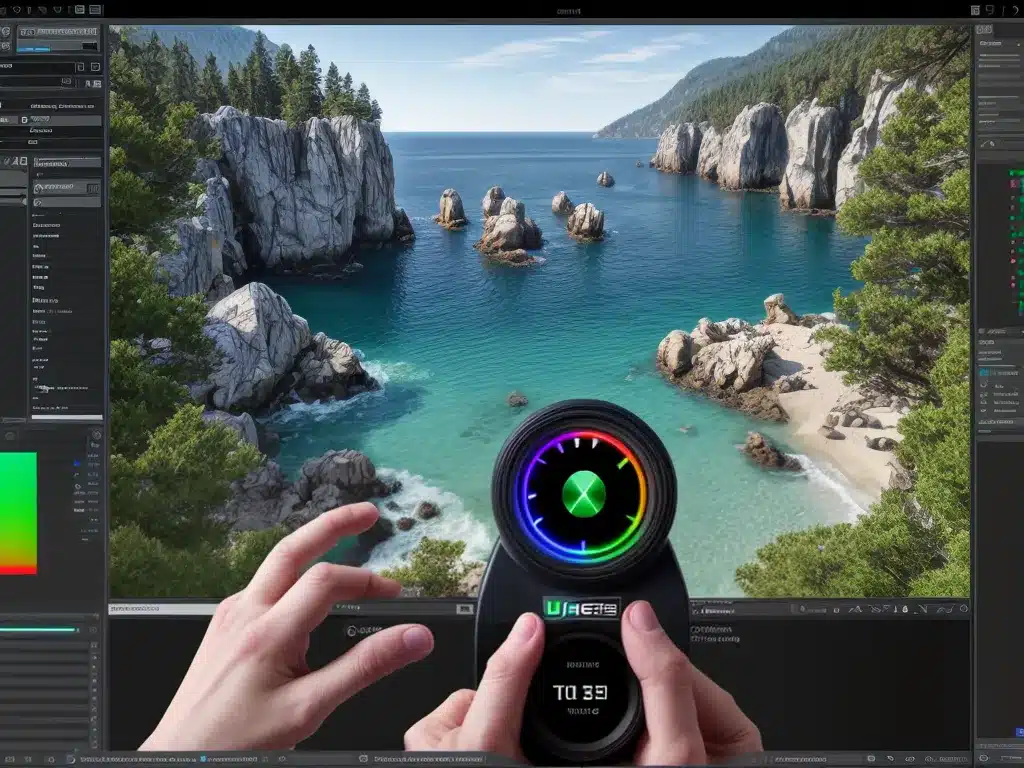
Introduction
Unreal Engine 5 (UE5) is an incredibly powerful game engine that enables developers to create stunning visuals. However, all that graphical fidelity comes at a cost – you need robust hardware to run UE5 games smoothly.
Fortunately, UE5 provides a plethora of graphics settings you can tweak to optimize performance on your system. In this guide, I’ll share my top tips for achieving the best frame rates in UE5 by adjusting graphics options.
Lower Screen Resolution
One of the simplest yet most effective ways to boost performance is to lower your screen resolution. Higher resolutions like 4K put a heavier load on your GPU to render more pixels.
Here are some resolution settings to try in UE5:
-
1080p – This 1920 x 1080 resolution provides a nice balance between visual fidelity and performance. It’s a good option for many mid-range GPUs.
-
900p – At 1600 x 900 resolution, you reduce the pixel count compared to 1080p. This can significantly improve frame rates on weaker GPUs.
-
720p – 1280 x 720 is considered the minimum for a decent experience. Going below this introduces visible pixelation.
I recommend experimenting to find the “sweet spot” resolution your system can handle while still looking sharp.
Use Scalable 3D Resolution
UE5 has a handy graphics setting called Scalable 3D Resolution that dynamically adjusts render resolution to maintain your target frame rate.
For example, you set your desired frame rate to 60 fps and pick a resolution like 1440p. When your frames start dropping below 60, Scalable 3D Resolution will automatically lower resolution as needed to hit your target.
This prevents jarring dips in frame rate and creates a smoother overall experience. I highly recommend enabling this setting for most systems.
Lower Texture Quality
High resolution textures are one of the biggest drains on performance in UE5. Limiting texture quality can dramatically improve frame rates.
Under Texture Quality in Settings, I recommend:
- High for high-end GPUs like RTX 3080 or better
- Medium for mid-range GPUs like RTX 2060 or RX 5700 XT
- Low for entry-level GPUs or APUs
Lower settings will make surfaces appear less detailed but textures still look decent at Medium or Low.
Turn Off Ray Tracing
Ray tracing greatly enhances lighting and reflections but is extremely demanding on your hardware. I suggest disabling ray tracing completely if you’re struggling to hit your target frame rate.
Under Rendering settings, set:
- Ray Tracing to Off
- Reflections to Screen Space instead of Ray Traced
You’ll still get decent visuals without the huge performance hit from ray tracing.
Reduce Post Processing Quality
Post processing adds filters and effects like bloom, lens flare, ambient occlusion and more. Dialing back post process quality saves on GPU usage.
In Project Settings > Post Processing, set it to Medium or Low quality. High is best reserved for top-tier hardware.
This will make effects slightly less pronounced but boost frames.
Cap Your Frame Rate
Capping frame rate prevents your GPU from working overtime to push out extremely high frame rates above your monitor’s refresh rate.
I suggest limiting it to your monitor’s max refresh rate. For example, 60 fps for a 60Hz monitor or 144 fps for a 144Hz monitor.
This allows your GPU to render only the frames needed, saving power and heat. Use the in-game Frame Rate Limiter setting.
Close Background Apps
Any apps running in the background take up RAM and CPU resources that could go towards UE5’s performance. Be sure to close out any other programs before playing for best results.
Also disable overlays like Discord’s game overlay which add extra overhead. Limit processes to only essential ones needed to run UE5 smoothly.
Overclock Your Components
If you’re comfortable overclocking, you can often squeeze out extra performance from your CPU and GPU. This extends their limits to render UE5 faster.
Just make sure to overclock conservatively and stress test for stability. Only pursue this if you have proper cooling as well.
Even a modest overclock can provide noticeable improvements in frame rate.
Upgrade Your Hardware
If you’ve optimized settings and are still not reaching desired performance, a hardware upgrade may be necessary.
To run UE5 well, I recommend a good modern gaming CPU like Intel Core i5/i7 or Ryzen 5/7. For GPU, aim for at least an RTX 2060 or RX 5700. 16GB of RAM is also advised.
Upgrading components like the GPU can dramatically improve your UE5 experience if current hardware is lacking.
Summary
Optimizing your UE5 graphics settings doesn’t have to be hard. Start with the easy wins like lowering resolution, capping frame rate and reducing textures. Enable options like Scalable 3D Resolution as well.
For best results, close background apps, avoid ray tracing, and dial back post processing. Overclocking and upgrading hardware are also options if needed.
Don’t be afraid to experiment to find the right balance of visual fidelity and smooth frame rates for your system. With these tips, you can enjoy UE5’s stunning graphics without performance issues.












